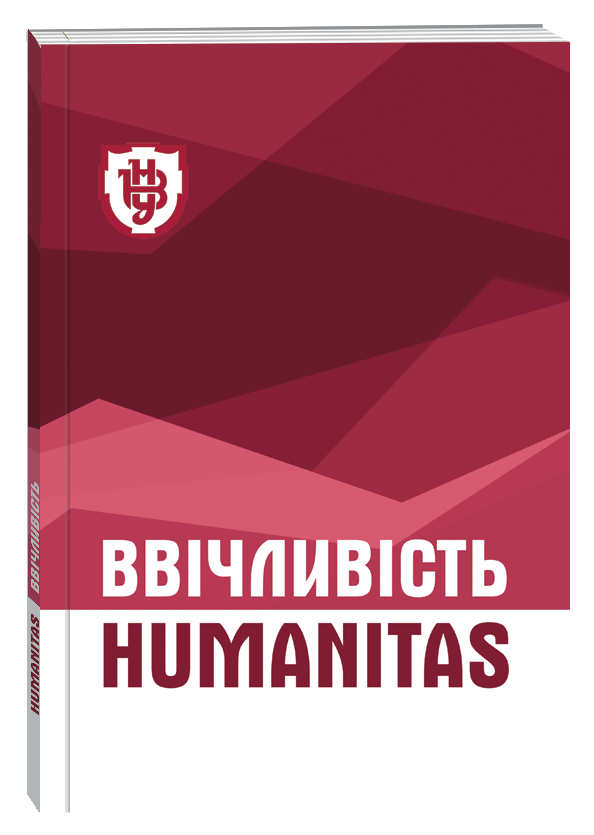REDUCING DIGITAL DIVIDES AS А COMPONENT OF SOCIAL WORK WITH ELDERLY
DOI:
https://doi.org/10.32782/humanitas/2022.3.4Keywords:
digital divide, digital inequality, digital competence, elderly learners, digital empowerment, strengthsbased approachAbstract
The development of the information society has led to the emergence of digital divides, which are considered evidenceі of digital inequality and digital exclusion. The objectives of the study is to characterize the specifics of the use of digital technologies by the elderly and to determine the means of digital empowerment of people of this age group. The study uses a modified model of the British researcher E. Helspers (2012), which includes the characteristics of the availability of digital resources. Within the framework of the study, a survey was conducted of 407 clients of the territorial center of social service (provision of social services) of the Podilsky District of Poltava, among whom there are learners from so called the University of the Third Age. The analysis of respondents’ answers provides grounds for distinguishing such factors of the digital divide of the elderly as: economic, social, technical, infrastructural, language factor, as well as the factor of knowledge, abilities and skills (digital competences), which have different degrees of manifestation. The article defines that social work with the elderly to reduce the impact of digital divides. It should include a set of measures, initiatives, strategies used to overcome the effects of social and digital exclusivity mechanisms in order to ensure the full participation of elderly individuals in the life of the information society. The expediency of using an innovative method – an approach focused on the strengths of clients, in order to reduce the impact of digital gaps on elderly clients is justified. Attention is focused on the application of such technologies in social work with the elderly during digital inclusion as case management and mutual help groups, the importance of a harmonious combination of individual and group work methods is emphasized. The article provides recommendations on the organization of socio-geragogical work with elderly clients of the territorial center for digital equipment.
References
Денисюк О. М., Маденова, Ю. В. Організація дозвілля людей похилого віку в громадських та державних установах. Молодий вчений. 2019. № 11. С. 897–902.
Житинська М. О. Освітнє середовище для людей похилого віку: перспективи та можливості розвитку в Україні. Соціальна робота в Україні: теорія і практика. 2014. № 3–4. С. 12–19.
Кухта М. П. Соціальний потенціал людей старшого віку в Україні : монографія. Київ : КНУКіМ, 2018. 304 с.
Опис Рамки цифрових компетентностей для громадян України / Міністерство цифрової трансформації України, 2021. URL: https://bit.ly/3a7IXu9
Сіленко А. Цифрова нерівність як глобальна соціально-політична проблема. Політичний менеджмент. 2006. № 3. С. 51–61.
Синицька Д. Зеленський пообіцяв безкоштовні смартфони вакцинованим українцям старшим за 60 років. Полтавщина, 2022. 8 лютого. https://poltava.to/news/64649/
Friemel T.N. The digital divide has grown old: Determinants of a digital divide among seniors. New Media & Society. 2016. Vol. 18(2). P. 313–331.
Giannoumis G. A. Regulating Web Content: the nexus of legislation and performance standards in the United Kingdom and Norway. Behavioral Sciences & the Law. 2014. Vol. 32(1). P. 52–75.
Helsper E. J. A corresponding fields model for the links between social and digital exclusion: a corresponding fields model for digital exclusion. Communication Theory. 2012. Vol. 22. P. 403– 426.
Hilbert M. The end justifies the definition: The manifold outlooks on the digital divide and their practical usefulness for policy-making. Telecommunications Policy. 2011. Vol. 35(8). P. 715–736.
Kong S. C., Wang Y. Q., & Lai M. Development and validation of an instrument for measuring digital empowerment of primary school students. CompEd 2019: Proceedings of the ACM conference on global computing education Association for Computing Machinery, Inc. 2019. P. 172–177. URL: https://doi.org/10.1145/3300115.3309523
López Seguí F. et al. An Intergenerational Information and Communications Technology Learning Project to Improve Digital Skills: User Satisfaction Evaluation. JMIR Aging. 2019. Vol. 2(2). DOI: 10.2196/13939
Mathrani A., Sarvesh T. & Umer R. Digital divide framework: online learning in developing countries during the COVID-19 lockdown, Globalisation, Societies and Education, 2021. DOI: 10.1080/14767724.2021.1981253
Mori C. K. Digital inclusion: are we all talking about the same thing? ICTs and sustainable solutions for the digital divide: theory and perspectives. New York : Information Science Reference, 2011. P. 45–64.
Semigina T. Development the strengths-based approaches in modern social work. Paradigms of the Modern Educational Process: Opportunities and Challenges for Society. Dallas : Primedia eLaunch LLS, 2019. P. 96–105.
Sieck C. J. et al. Digital inclusion as a social determinant of health. NPJ Digital Medicine. 2021. Vol. 4(1). P. 52. doi:10.1038/s41746-021-00413-8
Tai K.-T., Porumbescu G., Shon, J. Can e-participation stimulate offline citizen participation: an empirical test with practical implications. Public Management Review. 2020. Vol. 2(2). P. 278–296.







